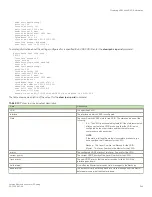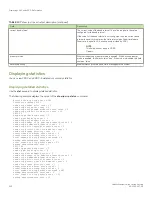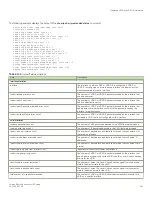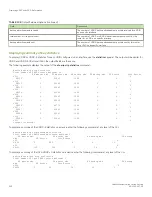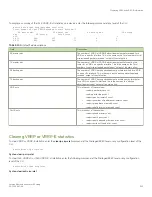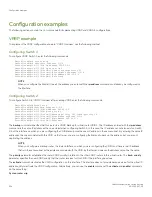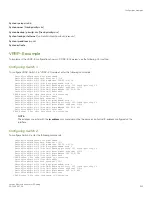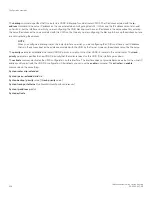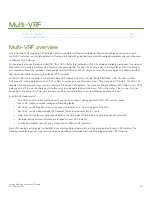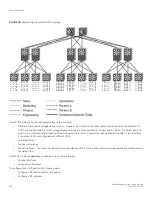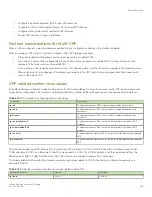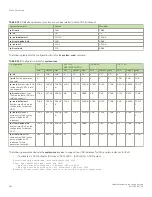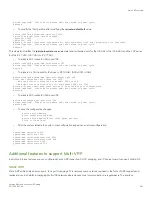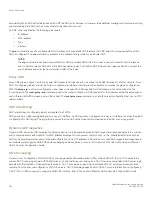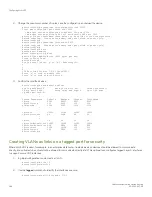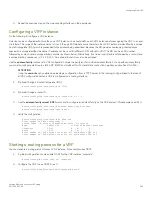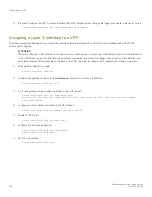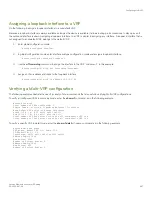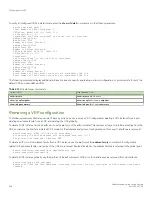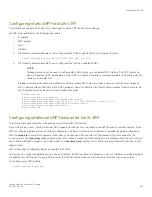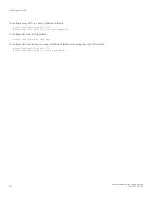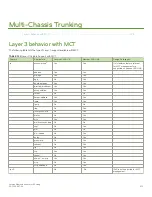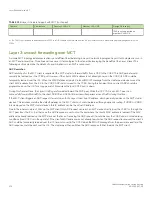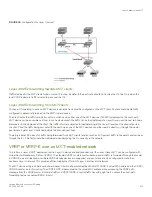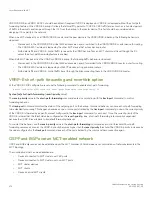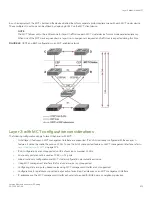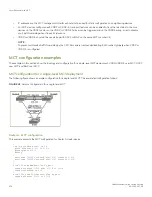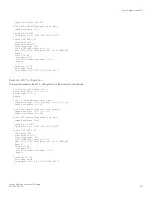
associated with an ARP entry determines which VRF the ARP entry belongs to. However, the additional management involved in adding
and maintaining static ARP cache entries must also be taken into account.
An ARP entry is defined by the following parameters:
•
IP address
•
MAC address
•
Type
•
Interface
The
arp
command is used to configure static ARP entries on a nondefault VRF interface. (An ARP index is not required before a static
ARP is configured.) The
arp
command is available in the address-family mode for a particular VRF.
NOTE
The
arp
command is backward compatible from FastIron release 08.0.00a, which uses a new command format. In releases
prior to FastIron release 08.0.00a, static ARP needed an index. For FastIron 08.0.00a and later releases, FastIron accepts the
use of indexes as well as the new command without the index.
Proxy ARP
Proxy ARP allows a Layer 3 switch to answer ARP requests from devices on one subnet on behalf of devices in another network. Proxy
ARP is configured globally and can be further configured per interface. Interface-level configuration overrides the global configuration.
With the
proxy-arp
command configured, a router does not respond to ARP requests for IP addresses in the same subnet as the
incoming ports. The
local-proxy-arp
command permits the router to respond to ARP requests for IP addresses within the same subnet
and to forward all traffic between hosts in the subnet. The
local-proxy-arp
command is an interface-level configuration that has no VRF-
related impact.
ARP rate limiting
ARP rate limiting is configured globally and applies to all VRFs.
ARP age can be configured globally and on a Layer 3 interface. An ARP age timer configured on a Layer 3 interface overrides the global
configuration for ARP aging. The aging timer ensures that the ARP cache does not retain learned entries that are no longer valid.
Dynamic ARP inspection
Dynamic ARP Inspection (DAI) enables the Brocade device to intercept and examine all ARP request and response packets in a subnet
and to discard packets with invalid IP-to-MAC address bindings. DAI can prevent common man-in-the-middle (MiM) attacks such as
ARP cache poisoning and can prevent the misconfiguration of client IP addresses. DAI allows only valid ARP requests and responses to
be forwarded, and supports Multi-VRFs with overlapping address spaces. For more information on DAI, refer to the
FastIron Ethernet
Switch Security Configuration Guide
.
DHCP snooping
Dynamic Host Configuration Protocol (DHCP) snooping enables a Brocade device to filter untrusted DHCP IPv4 or IPv6 packets in a
subnet. DHCP snooping can ward off MiM attacks, such as a malicious user posing as a DHCP server sending false DHCP server reply
packets with the intention of misdirecting other users. DHCP snooping can also stop unauthorized DHCP servers and prevent errors
resulting from the user misconfiguration of DHCP servers. DHCP snooping supports Multi-VRFs. For more information on configuring
DHCP IPv4 or IPv6 snooping to support a Multi-VRF instance, refer to the
FastIron Ethernet Switch Security Configuration Guide
.
Multi-VRF overview
FastIron Ethernet Switch Layer 3 Routing
562
53-1003627-04
Summary of Contents for FastIron SX 1600
Page 2: ...FastIron Ethernet Switch Layer 3 Routing 2 53 1003627 04 ...
Page 16: ...FastIron Ethernet Switch Layer 3 Routing 16 53 1003627 04 ...
Page 20: ...FastIron Ethernet Switch Layer 3 Routing 20 53 1003627 04 ...
Page 142: ...FastIron Ethernet Switch Layer 3 Routing 142 53 1003627 04 ...
Page 150: ...FastIron Ethernet Switch Layer 3 Routing 150 53 1003627 04 ...
Page 200: ...FastIron Ethernet Switch Layer 3 Routing 200 53 1003627 04 ...
Page 214: ...FastIron Ethernet Switch Layer 3 Routing 214 53 1003627 04 ...
Page 350: ...FastIron Ethernet Switch Layer 3 Routing 350 53 1003627 04 ...
Page 476: ...FastIron Ethernet Switch Layer 3 Routing 476 53 1003627 04 ...
Page 588: ...FastIron Ethernet Switch Layer 3 Routing 588 53 1003627 04 ...


